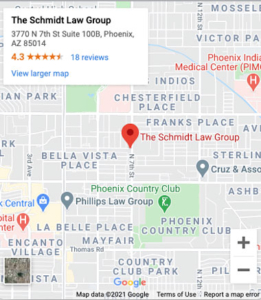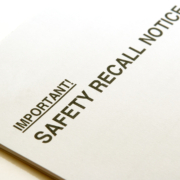Arizona motorcycle riders are in love with their bikes and the beautiful scenery the state offers. Therefore, they are sometimes resistant to safety measures they believe may lessen their experience, even though these steps might save their lives. The motorcycle life is hazardous, though, and statistics illustrate this reality. Motorcycle fatalities are 28 timesthose of deaths that occur in other motor vehicles, according to the National Highway Traffic Safety Administration (NHTSA). When a motorcycle collides with a car or truck, the motorcycle always loses, and the rider, who has limited protection, can be terribly injured or even killed.
Since motorcyclists are unlikely to give up their beloved form of transportation, they need to embrace all possible safety measures to protect themselves from other drivers and from themselves. Below are some of the most important safety measures they can take.
Don’t Drink and Ride
Of course, no one should drive any type of motor vehicle if they are drunk or impaired in any way, but this rule is even more important for motorcyclists. Thirty-seven percent of 2016 motorcycle fatalities were impaired by alcohol. Motorcyclists, more than other vehicle operators, need to rely on clear thinking and fast reflexes. Even a small amount of alcoholcan slow their reactions, leaving them more vulnerable to accidents. Research shows that drivers can be adversely affected by blood alcohol levels as low as .04 or .05, well below the legal level of .08. The best choice is to simply not drink before operating a motorcycle.
Wear a Helmet
In Arizona, motorcycle fatalities are increasing despite a decrease nationwide. Arizona had a total of 165 motorcycle deaths in 2017 in contrast to 144 in 2016, an increase of 14.6 percent. However, the US fatality rate dropped 8.6 percent, with deaths decreasing from 5,251 to 4,798. Experts believe that lax Arizona helmet laws are the biggest cause of Arizona motorcycle fatalities.
Arizona only requires that riders age 17 or younger must wear a helmet. While this standard is higher than in some states (Illinois, Iowa and New Hampshire have no helmet requirements at all), it’s still a weak law. Statistics show that helmets are 37% effective in preventing fatalities and 67% effective in preventing brain injuries. Some riders find helmets uncomfortable and feel they lessen their enjoyment, but this safety equipment definitely helps keep them safe. All helmets should meet the Department of Transportation Safety Standard, indicated by the DOT symbol on the back.
Wear Other Protective Gear
Safe motorcyclists cringe when they see riders clad in shorts, tennis shoes and baseball caps. Even minor accidents can cause a great deal of physical harm to riders, particularly if they are inappropriately dressed. Wearing tough materials, including leather, full-length pants, long sleeves and non-skid boots can help keep riders from being injured during a skid or collision. Experts also advise wearing reflective tape on clothing because other drivers often overlook motorcyclists, a primary cause of accidents. That “cool” biker clothing for sale at motorcycle shops is practical as well as stylish.
Keep Education and Licenses Current
Twenty-seven percent of riders injured in 2016 accidents were operating their vehicles without valid licenses. This stat indicates that many motorcyclists may not be up-to-date with current motorcycle law. In Arizona, motorcyclists are given a license that doesn’t expire until the driver is 65, but they must take a new eye test and get a new photo every 12 years. To receive an Arizona Class M license, the rider must be at least 16 years old and pass a test. Those under age 18 must also complete a motorcycle driver education program approved by MVD, or have a guardian attest in writing that they have completed a minimum of 30 hours riding practice.
Even those riders who are currently meeting state regulations should consider taking a motorcycle safety course. These courses do not just focus on the motorcyclist’s driving ability but also teach defensive maneuvers. Many collisions are caused by other drivers who do not give a motorcycle the same consideration that they do cars and trucks. A quality safety course trains riders to compensate for these drivers. In Arizona, getting a motorcycle license is easy and the safety rules are rather lax. Taking a safety course can help make up for these factors.
Legal Representation
Motorcycle safety in Arizona can be challenging for a number of reasons. To stay safe, motorcyclists need to embrace ways to enhance their own safety. The Schmidt Law Group offers expert representation for those riders who end up injured due to the negligence of others. The motorcycle fatality rate is rising in the state despite a reduction of deaths throughout the nation. These deaths and serious injuries cost the state and individuals millions of dollars each year. Injured riders are often presented with crushing medical bills and long-term treatment costs that can make simple survival difficult.
Even safe motorcyclists are often injured through no fault of their own. These accident victims need the help of a law firm that is experienced in personal injury cases. The Schmidt Law Group knows how to get accident victims the financial relief they need. They can get their clients compensation for their medical treatment as well as their living expenses. The Schmidt Law Group also determines if the victim should receive pain and suffering compensation, or if a family should file a wrongful death suit. Motorcycle accidents are especially devastating, and victims need expert help.
In Arizona, motorcycle safety is not what it could be. If riders are involved in an accident, they may sustain serious and even permanent injuries. Those injured in an Arizona motorcycle accident should call The Schmidt Law Group at (602) 282-0047 or request a free case evaluation.













